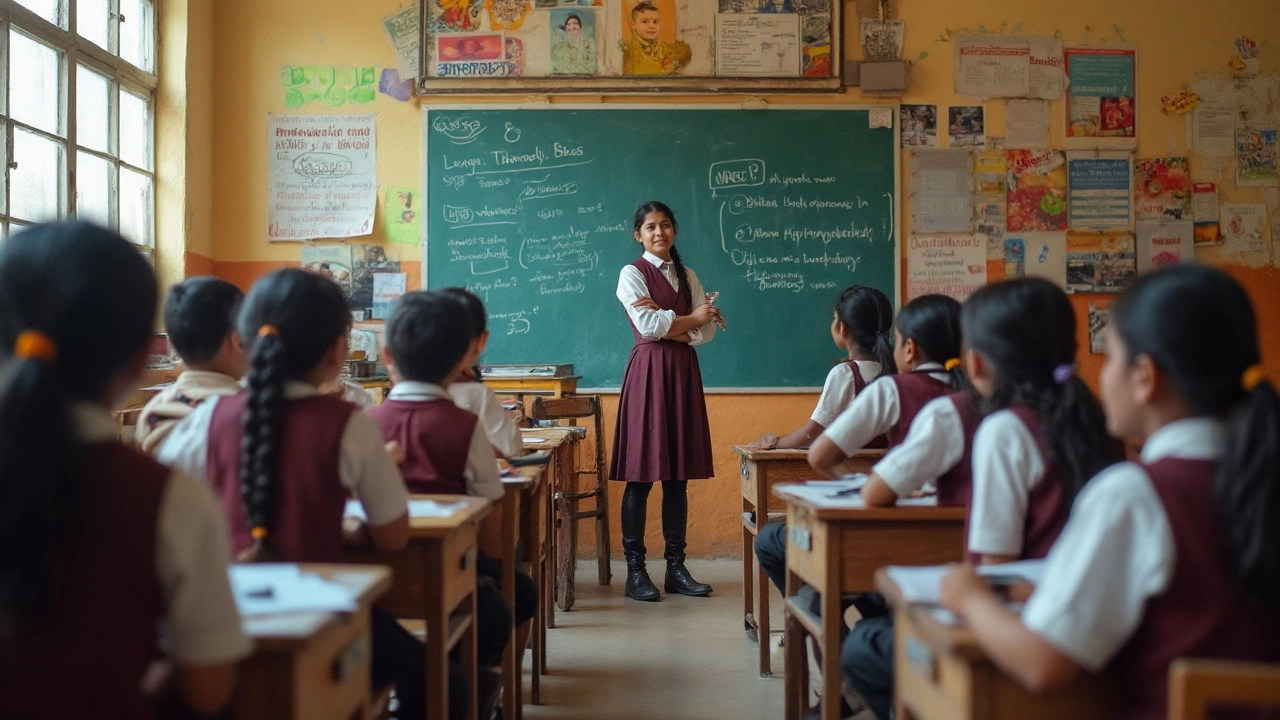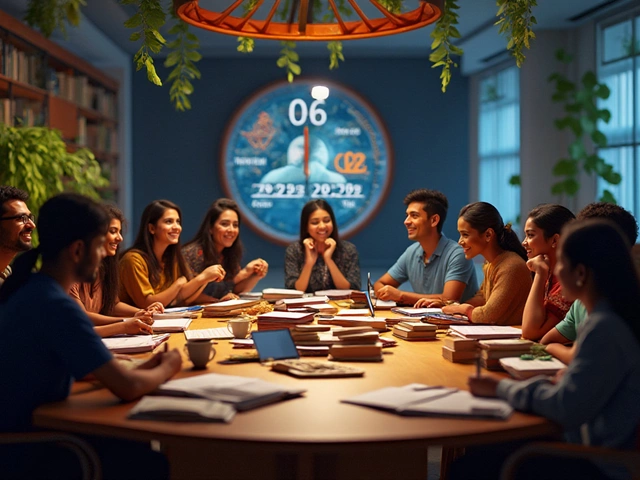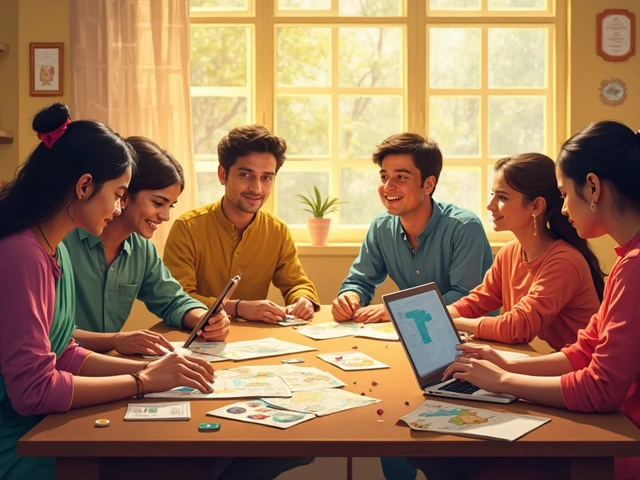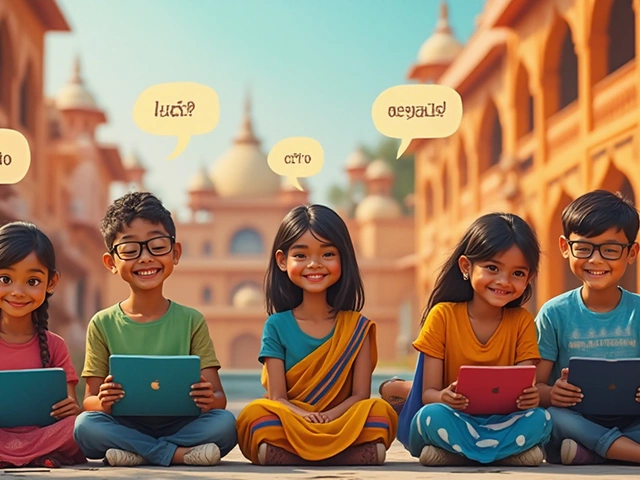Ever noticed the term CBSE popping up when researching Indian schools? You’re not alone. So, what does CBSE stand for? It’s Central Board of Secondary Education. For families deciding where their kids should study, those four letters can be a game-changer.
The CBSE board runs a huge portion of schools across India and even abroad. It’s kind of a big deal—if your child is in a CBSE school, they’ll follow the same syllabus as kids in thousands of other schools. That means stability, but also tons of questions for parents and students alike about what to expect.
Here’s the thing: CBSE isn’t just about giving out report cards. It shapes what teachers teach, what textbooks students read, and even how students are tested. That’s why a lot of parents dive deep into CBSE’s style before choosing a school. If you want to know whether CBSE is a good fit or just want some insider tips to make things easier, you’ve come to the right place.
- What Does CBSE Stand For?
- Origins and Role of CBSE
- CBSE Syllabus: What’s Inside?
- How CBSE Exams Work
- Is CBSE Right for Your Child?
- CBSE: Surprising Facts and Handy Tips
What Does CBSE Stand For?
CBSE means Central Board of Secondary Education. It’s a national level board of education in India, run and overseen by the central government. CBSE isn’t just a short form you see on report cards—it’s a big part of how millions of kids go to school and learn every single day.
The official CBSE head office is in Delhi, and it was set up way back in 1962. The main goal? Keep Indian education consistent, so no matter where you’re studying—Delhi, Lucknow, or even abroad at an Indian school in Dubai—you’re learning the same subjects and taking the same exams.
"CBSE is committed to providing a robust, vibrant and holistic education that will mould students into responsible and successful citizens." – From the official CBSE Mission Statement
Let’s break it down:
- ‘Central’ means it’s governed by India’s central government, not any specific state.
- ‘Board’ is the authority that creates and monitors the rules for schools that follow it.
- ‘Secondary Education’ covers students roughly from class 1 to class 12, including all the big exams (like 10th and 12th board exams).
Check out how huge the board really is:
| Number of CBSE Schools (2024) | Over 27,000 |
|---|---|
| Countries with CBSE Schools | 28 |
| Students Registered (2024) | More than 23 million |
| Languages Offered for Exams | 40+ |
The CBSE syllabus is designed so kids can easily move from one CBSE school to another, anywhere in India or even internationally. This especially helps families who get transferred often, like those in the military or corporate jobs.
So if you see CBSE on a school’s entrance gate, you know it’s part of a big, organized system that tries to keep learning fair and consistent for everyone.
Origins and Role of CBSE
The Central Board of Secondary Education (CBSE) started way back in 1929. It was the brainchild of the Indian government, meant to bring a common standard to schools in different parts of the country. Those days, India didn’t have a lot of school boards covering such a huge territory, so CBSE came in to make life easier for students who had parents moving around for government jobs. If your family had to change cities, your kid wouldn’t have to start over in a totally different system.
CBSE’s central office is based in New Delhi, but its reach is much wider than most people guess. Right now, more than 27,000 schools in India and nearly 240 schools abroad follow the CBSE system. Public and private schools, all over, sign up for CBSE so they can tap into a tried-and-true model of teaching.
| CBSE by the Numbers (2025) | Value |
|---|---|
| Year Established | 1929 |
| Headquarters | New Delhi |
| Schools in India | 27,000+ |
| International CBSE Schools | ~240 |
At its core, the CBSE board is there to keep education fair, consistent, and relevant for the future. It sets the curriculum, writes textbooks, conducts exams, and even runs teacher training workshops. Whenever educational changes happen nationally—like the big shift to skill-based learning or when digital exams came in—CBSE is usually the first to lead the way.
Every few years, it updates syllabus content and sometimes rearranges major exams to ease student stress or focus on what’s most important in each grade. The role of CBSE isn’t just about what’s in a chapter; it’s about giving students everywhere the same shot, whether they're in a city or a rural school.
- CBSE was the first Indian school board to adopt digital mark sheets using the DigiLocker platform.
- It supports both English and Hindi as medium of instruction, making it accessible for a broader student base.
- CBSE works closely with the National Council of Educational Research and Training (NCERT) for syllabus updates and teaching guidelines.
When you look under the hood, CBSE’s main job is to create a level playing field and make learning practical to real-world needs. That’s why its influence keeps growing, year after year.
CBSE Syllabus: What’s Inside?
Let’s talk about what really goes on inside a CBSE classroom. The CBSE syllabus is standardized by the board, which means whether your child studies in Delhi, Chennai, or even Dubai, the books and topics are nearly identical. This brings some serious peace of mind if you ever need to switch schools, especially to another city—or country.
Here’s a quick breakdown of what the CBSE syllabus covers:
- Core Subjects: Every student tackles English, Hindi, Mathematics, Science (split into Physics, Chemistry, and Biology at higher grades), and Social Science (History, Geography, Civics, Economics).
- Optional Subjects: In senior classes (usually grades 11 and 12), students pick a stream: Science, Commerce, or Humanities. Each stream has different options like Computer Science, Physical Education, and Economics.
- Languages: CBSE asks students to pick a second (and sometimes third) language up to grade 10. Popular picks: Sanskrit, French, German, or regional Indian languages.
- Skill-based Learning: There’s a push for coding, artificial intelligence, and creative subjects like art and design, mostly from grade 6 onwards.
The syllabus isn’t just about cramming facts. CBSE regularly updates it to help students build skills—critical thinking, problem solving, and working in groups. Science labs, project work, and group discussions are big parts of the experience now, not just board exams.
Wondering how the workload looks across classes? Here’s a sample of subject spread from grades 8 to 12:
| Grade | Compulsory Subjects | Optional Subjects |
|---|---|---|
| 8 | English, Hindi, Mathematics, Science, Social Science, Third Language | Art, Physical Education |
| 10 | English, Hindi, Mathematics, Science, Social Science | IT, Additional Languages, Fine Arts |
| 12 (Science) | English, Physics, Chemistry | Maths/Biology/Computer Science/Physical Education |
| 12 (Commerce) | English, Accountancy, Business Studies, Economics | Maths/Entrepreneurship/IT |
| 12 (Humanities) | English, History, Political Science | Psychology/Sociology/Geography/Fine Arts |
Stressed about board exams? Good news: CBSE trimmed the syllabus by nearly 30% for the 2023-24 session to help ease pressure post-pandemic. They’re focusing more on important concepts, not rote learning. Plus, a lot more sample papers and online resources are now freely available through the official CBSE website and schools’ portals.
So, if you value consistency, flexibility in subjects, and regular syllabus upgrades, CBSE gets a thumbs up. Got a pet who likes to chew homework? Sorry, Bella—CBSE’s mostly online now, so no more munching on assignments!
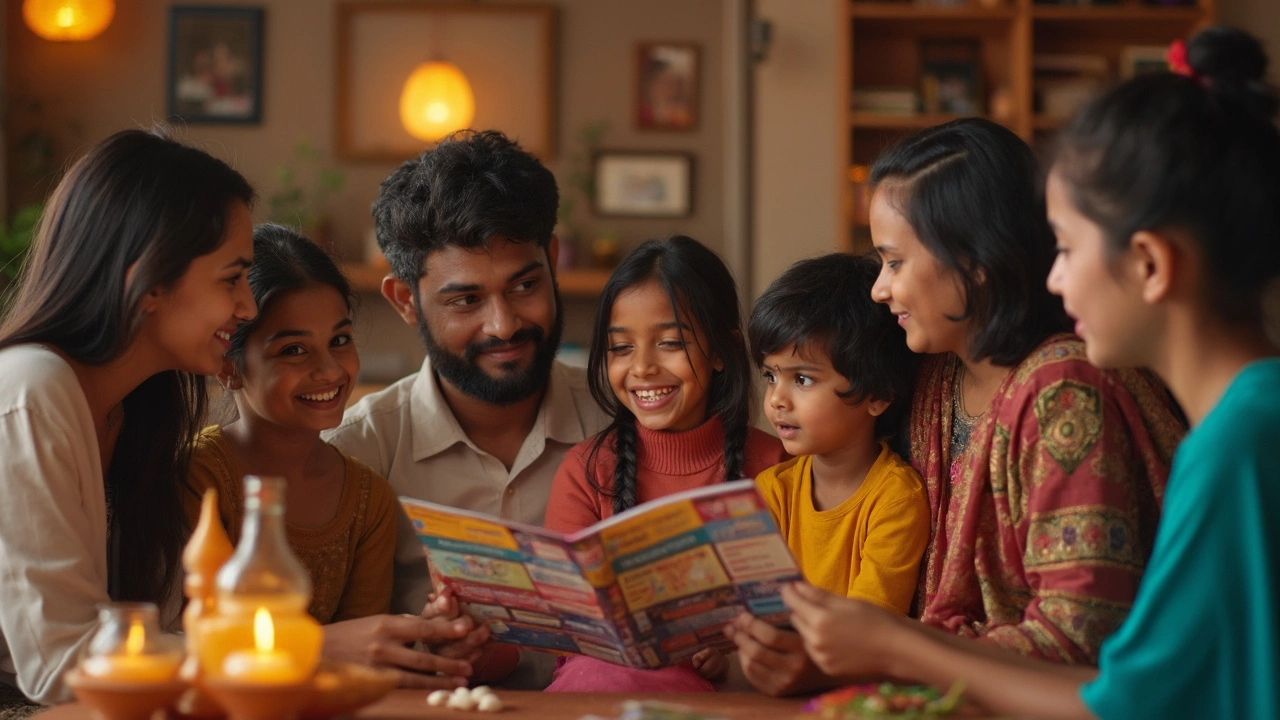
How CBSE Exams Work
If you’re new to the Central Board of Secondary Education, or CBSE, the way its exams roll out might feel a bit overwhelming at first. So, let’s break it down. CBSE exams start as early as Class 1, but the main buzz is around the board exams for Class 10 and Class 12. These aren’t just school-level tests—students across India and in some other countries all take them at the same time.
CBSE board exams happen once a year, usually in February or March. The Class 10 exams are formally called the All India Secondary School Examination (AISSE) and the Class 12 exams are known as the All India Senior School Certificate Examination (AISSCE). These exams are key since they can impact your next steps—college, entrance exams, career choices, you name it.
- Exam Pattern: CBSE exams are mostly written, with a mix of objective questions (think multiple choice and fill-in-the-blanks) and long/short answers. For science subjects, you’ll also have practicals—those experiments in labs that can feel like a real-life quiz.
- Internal Assessment: Besides the final exam, teachers grade students through projects, assignments, and practicals. This is called internal assessment, usually worth 20% of your total marks in key subjects.
- Marking: CBSE uses a grading system from A1 (the best) to E, along with percentage scores. No negative marking for wrong answers in board exams, so you can always give it your best shot.
Ever wondered how many students actually appear for these exams? Here’s a quick look:
| Year | Class 10 Students | Class 12 Students |
|---|---|---|
| 2023 | 21,86,940 | 16,96,770 |
| 2024 | 22,38,000 | 17,15,000 |
On the exam days, everything is standardized. Question papers arrive sealed. Students can only open them at the official time, with strict rules to prevent cheating. And yes, you have to bring your admit card—no exceptions!
Results come out in May or June and are released online. You can check your marks from anywhere—even on your phone. And if you’re unhappy with your scores, CBSE allows revaluation and even compartment exams to give students a second chance.
The structure is designed to be fair and equal for everyone. This way, a student from a small town takes basically the same exam as someone in Delhi or even Dubai. Pretty leveling, right?
Is CBSE Right for Your Child?
Choosing the right board isn't just about school reputation—it's about how your child learns best and where they see themselves in the future. Here’s what matters with CBSE.
First off, CBSE is known for its standard and uniform curriculum. So, if your family moves around India (or even some other countries), your child won’t have to switch textbooks or get used to a whole new set of rules at every move. That’s a huge relief for families with jobs that require frequent transfers.
If your kid is aiming for competitive entrance exams like JEE (for engineering) or NEET (for medical), CBSE offers an edge because its syllabus matches closely with these national exams. CBSE students are often comfortable with those exam patterns right after grade 12, so there’s less struggle to “catch up” in coaching classes.
Now, what about learning styles? CBSE does focus a lot on theory and core concepts in subjects like Math and Science. Kids who like reading, memorizing, and then applying concepts to solve problems usually feel at home. But if your child is more hands-on or prefers project-based, practical tasks, they might find the CBSE format a bit rigid compared to boards like ICSE or international curricula.
Don’t forget language options. CBSE schools almost always use English or Hindi as a medium, so kids get strong foundations in those languages. If your child wants advanced foreign language learning, other boards may have broader options.
- If you plan to switch cities, CBSE's consistency helps keep schooling stress low.
- For ambition in Indian competitive exams, CBSE's syllabus lines up perfectly.
- CBSE is ideal for families who want a less expensive, widely recognized option, since most central and state government schools follow it.
The bottom line: look at your child’s learning style, future plans, your relocation needs, and your educational budget. If stability, affordability, and national exam prep win out for you, CBSE can be a smart pick.
CBSE: Surprising Facts and Handy Tips
Most people know CBSE as just an education board, but there’s way more going on behind the scenes. The CBSE board covers over 27,000 schools in India and more than 240 schools abroad. That’s a reach you don’t see every day. Plus, CBSE was the first education board in India to make continuous and comprehensive evaluation (CCE) a thing. This means students don’t just get graded on exams, but also on things like projects and daily activities.
CBSE invests in student health too. Their curriculum pushes schools to add yoga, health education, and physical activity—something my dog Bella could get behind, honestly. And here’s a cool one: since 2020, coding and artificial intelligence have found their way onto the CBSE syllabus, even in middle school. It’s not just about textbooks anymore; practical skills are getting space as well.
If you’re worried about language options, CBSE also allows students to pick from a huge range of Indian and foreign languages—from Sanskrit to German. This means when kids switch schools (even states or countries), the transition is less of a headache for families.
| Category | Data |
|---|---|
| Registered CBSE schools | 27,000+ |
| CBSE students (Class 10/12 exams annually) | 4.6 million+ |
| Countries with CBSE schools | 28 |
| Official languages offered | 30+ |
Thinking about the best ways to help your child navigate the CBSE system? Here are some simple tips:
- Download the latest syllabus each year from the official CBSE website—changes can happen even at the last minute.
- Don’t ignore projects or internal assessments; they usually make up 20-30% of final scores, which can really add up if exams don’t go as planned.
- Encourage regular reading, not just memorizing. The board loves application-based questions, not just stuff copied from textbooks.
- Check out free mock papers and sample questions from the CBSE portal for extra practice. They often repeat concepts.
- If your child feels overwhelmed, look into student helplines and online support—the board actually runs dedicated help services every exam season.
CBSE seems strict, but the idea is to prep students for real-world competition, not just exams. A little insider know-how goes a long way in making sure the school years aren’t tougher than they need to be.
